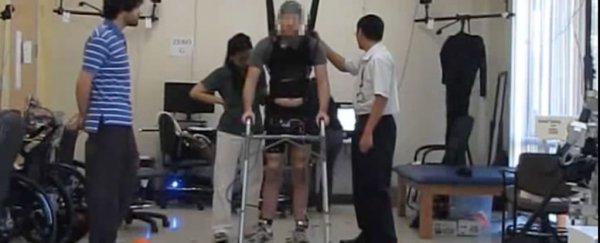A paraplegic man who was paralysed for five years has walked again on his own two feet, thanks to a new kind of brain-computer interface that can reroute his thoughts to his legs, bypassing his spinal cord entirely.
The anonymous man, who experiences complete paralysis in both legs due to a severe spinal cord injury (SCI), is the first such patient to demonstrate that brain-controlled overground walking after paraplegia due to SCI is feasible.
"Even after years of paralysis, the brain can still generate robust brain waves that can be harnessed to enable basic walking," one of the researchers, Zoran Nenadic from the University of California, Irvine in the US, said in a press release. "We showed that you can restore intuitive, brain-controlled walking after a complete spinal cord injury."
The system works via non-invasive electroencephalography (EEG), where the participant wears a cap that captures electrical signals generated by the brain. These are then processed by a computer algorithm and transmitted to electrodes attached to the subject's knees, triggering movement in the leg muscles.
Not that regaining the power to walk is as easy as attaching some wires and flipping a switch. The volunteer had to undergo months of mental training to reactivate his brain's conceptual walking ability, in addition to extensive physical therapy that enabled him to begin moving his legs again.
The mental training consisted of the man wearing an EEG cap that would read his brain waves as he was being instructed to think about walking. Software processed his thoughts and isolated the brain waves associated with leg movement.
This progressed to the man using his thoughts to control the walking of a virtual reality avatar, before physical training commenced in earnest. The man first practised walking while suspended in the air, before finally standing on his own two feet again, culminating in him walking nearly 4 metres across the ground, as seen in the video above.
As the interface was custom-designed to suit the volunteer – and his particular brain waves – the team behind the research says further research will be needed if they want to achieve similar results for others.
"Once we've confirmed the usability of this non-invasive system, we can look into invasive means, such as brain implants," said co-author An Do, an assistant clinical professor of neurology. "We hope that an implant could achieve an even greater level of prosthesis control because brain waves are recorded with higher quality. In addition, such an implant could deliver sensation back to the brain, enabling the user to feel his legs."
The findings are published in The Journal of Neuroengineering and Rehabilitation.
